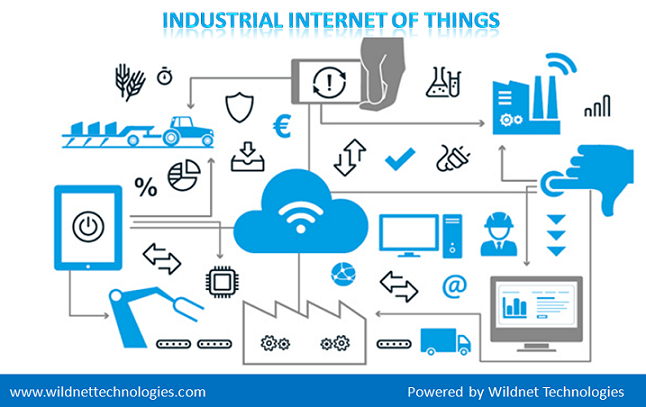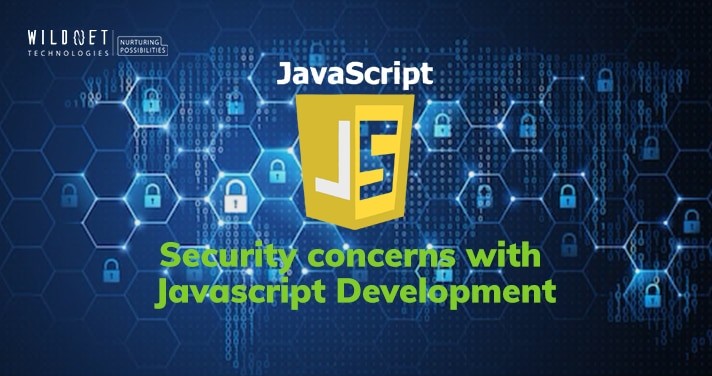In the rapidly evolving world of artificial intelligence, acronyms and jargon can quickly become overwhelming. One term you might have come across is “LLM,” especially in the context of generative AI. But what does it mean? Let’s delve into the world of AI language models, explicitly focusing on LLMs in generative AI, to understand their significance and role in today’s technology landscape. With each passing year, AI continues to integrate into various aspects of our lives, from personal assistants to complex problem-solving systems, making it essential to grasp the underlying concepts and technologies.
What Are AI Language Models?
AI language models are a subset of artificial intelligence focusing on understanding and generating human language. These models are trained using vast amounts of text data to recognize patterns, context, and semantics. They can be used for various tasks, such as translation, summarization, conversation, etc. By mimicking human language patterns, these models enable machines to engage in human-like communication, which can be transformative for industries like customer service, education, and entertainment.
Evolution of AI Language Models
AI language models have come a long way since their inception. Early models were rule-based and required extensive manual input to function. However, with the advent of machine learning, models became more sophisticated, learning from data rather than relying on predefined rules. This transition marked a significant shift in AI, allowing for more dynamic and adaptable systems.
What Is LLMs In Generative AI?
LLM stands for Large Language Model, a type of AI language model trained on massive datasets to understand and generate natural language. In generative AI, LLMs like GPT (Generative Pre-trained Transformer) can produce human-like text based on prompts, enabling applications in chatbots, content creation, code generation, and more. These models are designed to capture context, intent, and tone, making them highly valuable in both consumer and enterprise applications.
The Evolution of Generative AI and the Rise of Large Language Models
The breakthrough came with the development of neural networks and deep learning techniques, which allowed models to process and generate language in a more human-like way. This led to the creation of more advanced models like GPT-3 and BERT, which can understand context and develop coherent and contextually relevant text. These advancements have improved the accuracy and relevance of AI outputs and expanded the range of applications, making AI an integral part of technology development.
What Are Large Language Models (LLMs)?
LLM stands for “Large Language Model.” These models are a type of AI language model that is particularly large in terms of the number of parameters they use. Parameters in this context refer to the parts of the model learned from the training data, which help the model make predictions or generate text. The sheer size of these models gives them a powerful ability to understand complex language patterns and nuances, setting them apart from smaller models.
Defining Characteristics of LLMs
Large language models are characterized by their size and complexity. They typically have billions of parameters, allowing them to understand and generate text with high accuracy and fluency. This size enables them to perform various language tasks, from simple text completion to complex conversations and content creation. Furthermore, their vast training data allows them to cover an extensive array of topics, making them versatile in handling diverse queries and scenarios.
LLMs and Their Adaptive Learning Capabilities
LLMs’ ability to process and analyze massive datasets means they can continually learn and adapt, enhancing their performance over time. This adaptability is crucial for applications that require up-to-date information and ongoing learning from new data inputs, such as news summarization or real-time translation services.
The Role of LLMs in Generative AI
LLMs play a crucial role in generative AI. Generative AI refers to the technology that creates new content, such as images, music, or text, based on learned data patterns. LLMs in generative AI produce human-like text, which can be used in chatbots, virtual assistants, content creation, and more. They serve as the foundation for systems that require high levels of interaction and creativity, enabling machines to generate indistinguishable content from humans’ creations.
Enhancing Human-Like Interaction Through LLMs
LLMs’ ability to understand and generate contextually relevant text makes them invaluable in applications where human-like interaction and creativity are needed. They can create articles, reports, stories, and even code, making them versatile tools in various industries. This capability opens the door to innovative uses, such as developing interactive storytelling platforms or creating personalized learning experiences in educational technology.
Applications of LLMs in Content Creation
The applications of LLMs in generative AI are vast and varied. Understanding what is LLM in generative AI helps us appreciate how these tools are shaping different sectors. LLMs can generate articles, blogs, and other written content. They can assist writers by providing suggestions, generating ideas, or even writing entire pieces based on a given prompt. This can save time and effort for content creators and marketers. For instance, in journalism, LLMs can help draft news reports, freeing up human journalists to focus on investigative reporting and analysis.
Personalization and Trend Analysis in Marketing
Moreover, in marketing, LLMs can analyze trends and consumer behavior to tailor content that resonates with specific audiences. This personalized approach can lead to more effective campaigns and better engagement with target demographics, ultimately driving business success.
Conversational Agents: Enhancing Customer Support
One of the most popular applications of LLMs is in conversational agents or chatbots. These models can engage in human-like conversations, providing customer support, answering queries, and offering personalized recommendations. Their ability to understand context and provide relevant responses makes them a valuable tool for businesses looking to enhance customer interaction. In healthcare, for example, chatbots powered by LLMs can offer preliminary medical advice, helping to triage cases and direct patients to appropriate care.
LLMs in Education and Personalized Learning
Furthermore, conversational agents can assist students in education by answering questions, providing feedback on assignments, and offering personalized learning resources. This 24/7 availability and adaptability make them a powerful ally in traditional and online learning environments.
LLMs in Language Translation
LLMs can also be used for language translation, breaking down language barriers and enabling communication across different languages. Their capacity to understand context and nuances in language allows for more accurate and natural translations than traditional methods. This capability benefits multinational organizations, enabling seamless communication between global teams and customers.
Cultural Impact and Global Collaboration
In addition to business applications, LLMs in translation can play a pivotal role in cultural exchange and global collaboration. They facilitate international dialogue, promote cultural understanding, and contribute to global knowledge exchange by providing real-time translation services.
Code Generation and Software Development
In software development, LLMs can generate code snippets or assist developers by providing suggestions and autocompleting code. This can streamline the coding process and improve developers’ productivity. By reducing repetitive tasks and accelerating development timelines, LLMs allow engineers to focus on more complex and creative aspects of software design.
Debugging and Optimization Support
Moreover, LLMs can also assist in debugging and optimizing code, providing insights into potential errors or inefficiencies. This support enhances the software’s quality and contributes to more robust and reliable applications.
Challenges and Ethical Considerations
While LLMs in generative AI offer numerous benefits, they also come with challenges and considerations that must be addressed to ensure their responsible and effective use.
Ethical Risks: Misuse and Deepfakes
The ability of LLMs to generate human-like text raises ethical concerns about misuse, such as creating misleading information or deepfake content. It’s crucial to use these models responsibly and ensure they are used for moral purposes. Regulatory frameworks and guidelines are being developed to govern the use of AI technologies, aiming to prevent misuse and protect user data and privacy.
Promoting Transparency and Accountability
Educating users and developers about the ethical implications of AI and promoting transparency in AI processes are vital steps in fostering trust and accountability. This involves technical measures and an emphasis on ethical training and awareness.
Bias in LLMs and Mitigation Strategies
AI models, including LLMs, can inherit biases in their training data. This can lead to biased outputs, a significant concern, especially in applications involving decision-making or sensitive information. Understanding what is LLM in generative AI highlights the importance of addressing these challenges to ensure responsible use. Efforts are being made to address and mitigate these biases to ensure fairness and accuracy. Researchers are exploring methods to identify and reduce bias during training, such as diversifying training datasets and implementing fairness algorithms.
Ongoing Monitoring and Fairness
Continuous monitoring and evaluation of AI models are necessary to identify any emerging biases and adapt strategies accordingly. Collaboration between AI researchers, ethicists, and domain experts can further enhance the development of unbiased and equitable AI systems.
Accessibility Challenges and Technological Advancements
Training and running LLMs require significant computational resources. This can be a barrier for smaller organizations or individuals leveraging these models. However, technological advancements and cloud-based solutions are making it more accessible over time. Companies are developing more efficient algorithms and hardware to reduce the computational cost and increase the accessibility of LLMs.
Optimizing Resource Use for Broader Adoption
Innovative approaches, such as transfer learning and model distillation, are also helping to optimize resource usage without compromising performance. These techniques enable the broader adoption of LLMs across various sectors, democratizing access to advanced AI capabilities.
The Future of LLMs in Generative AI
The future of LLMs in generative AI looks promising. As technology advances, we can expect even more sophisticated models that push the boundaries of what is possible. These models will likely become more efficient, reducing the computational resources required while increasing their capabilities. This evolution will open new possibilities for AI applications, from personalized medicine to autonomous systems.
Driving Innovation and Integration Across Industries
With ongoing research and development, LLMs will continue to play a crucial role in shaping the future of AI, enabling new applications and driving innovation across industries. As AI becomes more integrated into our daily lives, the demand for intelligent, adaptable, and ethical AI solutions will grow, paving the way for a more connected and efficient world.
Conclusion: Embracing the Power of LLMs in Generative AI
In conclusion, LLMs in generative AI are powerful tools with the potential to transform how we interact with technology. Their applications are vast and impactful, from content creation to language translation and beyond. However, addressing their use challenges and ethical considerations is essential to ensure they are leveraged responsibly and effectively.
In conclusion, understanding what is LLM in generative AI is key to recognizing how these powerful tools can transform how we interact with technology. LLMs in generative AI are powerful tools with the potential to revolutionize various domains, from content creation to language translation and beyond. Their applications are vast and impactful. However, addressing the challenges and ethical considerations surrounding their use is essential to ensure they are leveraged responsibly and effectively.
Partnering with experts is essential if you want to integrate the power of generative AI and LLMs into your business strategy. The best digital marketing company in India can help you harness AI tools to streamline content creation, enhance customer engagement, and drive measurable growth. From AI-powered chatbots to intelligent campaign automation, they offer cutting-edge solutions tailored to your business goals. With the proper support, you can stay ahead in a competitive landscape and confidently make data-driven decisions. AI can transform your digital presence, whether you’re a startup or an enterprise. Trust in a leading agency to unlock AI’s full potential for your brand.
Read More
What Is Generative AI, And How Does It Work?
What is the primary goal of generative ai?
Generative Engine Optimization (GEO): Enhancing AI-Driven Content for Search
Can Generative AI Automate the Manual process of Content Writing?






